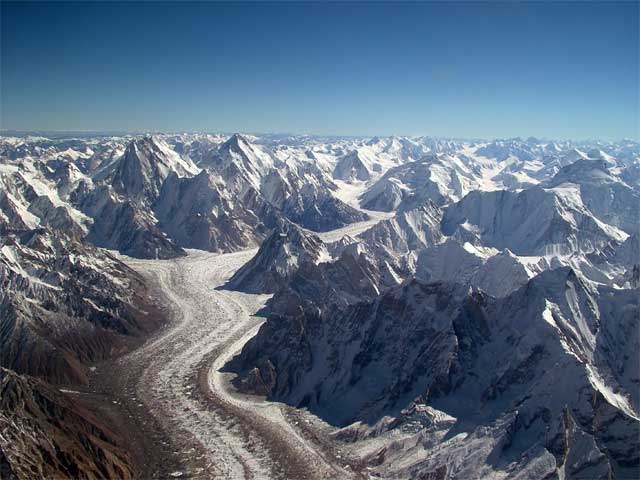October 12th, 2014
Key Findings
- The high-resolution model, GFDL-CM2.5, reproduces the seasonal cycle of high elevation hydroclimate across high-mountain Asia better than any of the models in IPCC AR5, particularly over the Karakoram (~Northern Pakistan).
- A climate change experiment using RCP8.5 from 1861-2100 reveals that only the Karkoram region exhibits a neutral change in total annual snowfall, whereas the rest of the Himalaya exhibits statistically significant loss. This is similar to the glacial “Karkoram Anomaly” where only glaciers in the Karakoram are staying the same size or growing, but decreasing everywhere else in the Himalaya.
- A difference in the seasonal cycle and timing of snowfall across the region explains these differences in the snowfall signal. The Karkoram receives most of its precipitation due to winter westerlies; warming during the summer does not reduce annual snowfall values. The rest of the Himalaya exhibits a more monsoonal seasonal cycle (precipitation mainly falling during the summer); its annual snowfall is therefore more sensitive to warming as temperatures rise above freezing precisely when the majority of precipitation falls.
- IPCC AR5 models do not capture the unique Karakoram signal of annual snowfall. The resolution does not properly capture the complex topography and high elevation of the Karakoram region, resulting in a region that is too warm in the present climate to sustain snow in the summer and also too sensitive to warming under a changing climate.
Sarah Kapnick, Tom Delworth, Moet Ashfaq, Sergey Malyshev, Chris Milly. Nature Geoscience.
Summary
The high mountains of Asia, including the Karakoram, Himalayas, and Tibetan Plateau, combine to form a region of perplexing hydroclimate changes. Glaciers in the Karakoram region have exhibited mass stability or even expansion, contrasting with glacial mass loss across the nearby Himalayas and Tibetan Plateau. This suggests that different regional snowfall or temperature signals might be detected in the Karakoram region. However, the remote location, complex terrain, and multi-country fabric of high-mountain Asia have made it difficult to maintain longer-term monitoring systems of the meteorological components that can influence glacial change.
The authors explore this region in-depth using a high-resolution climate model (GFDL-CM2.5), and help explain why this region experiences statistically neutral, but positive snowfall changes while other high elevation zones in the region exhibit statistically significant snowfall loss under greenhouse gas forcing. This study shows that differences in the seasonal cycle and seasonality of climate change signals are driving the climate change response.
A set of experiments from 1861-2100, compared with the latest available observing systems, allowed the authors to focus on how these mountains exhibit distinct seasonal cycles and resulting climate change signatures. The Karakoram seasonal cycle, dominated by non-monsoonal winter precipitation, uniquely protects it from reductions in annual snowfall under climate warming over the twenty-first century. The simulations in this study show that climate signals are detectable only with long and continuous records, and at specific elevations. These results provide a meteorological mechanism for regional differences in glacier response to climate warming.
The Karakoram glaciers were a source of controversy when mistakenly reported in the Intergovernmental Panel on Climate Change (IPCC) Forth Assessment Report to be receding faster than in any other part of the world and to have a high likelihood of disappearing by 2035. This paper explores the component of glacial accumulation (snowfall) to show that the Karakoram exhibits a different sign than the rest of the Himalaya. It provides evidence for fundamental differences in the meteorological forcings of these regions and helps explain why the Karakoram is unique. Moreover, snowmelt and glacial melt in the region provide water supply for industry and hydropower and can also cause extreme flooding. Understanding the region’s hydroclimate is required to provide necessary infrastructure for climate change adaptation.



